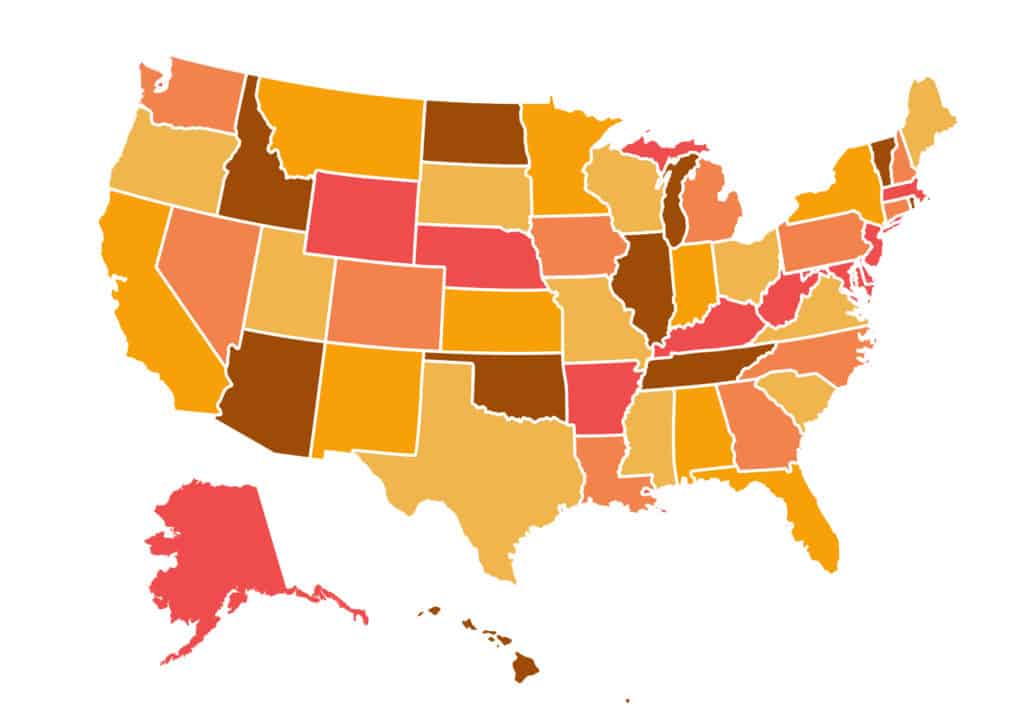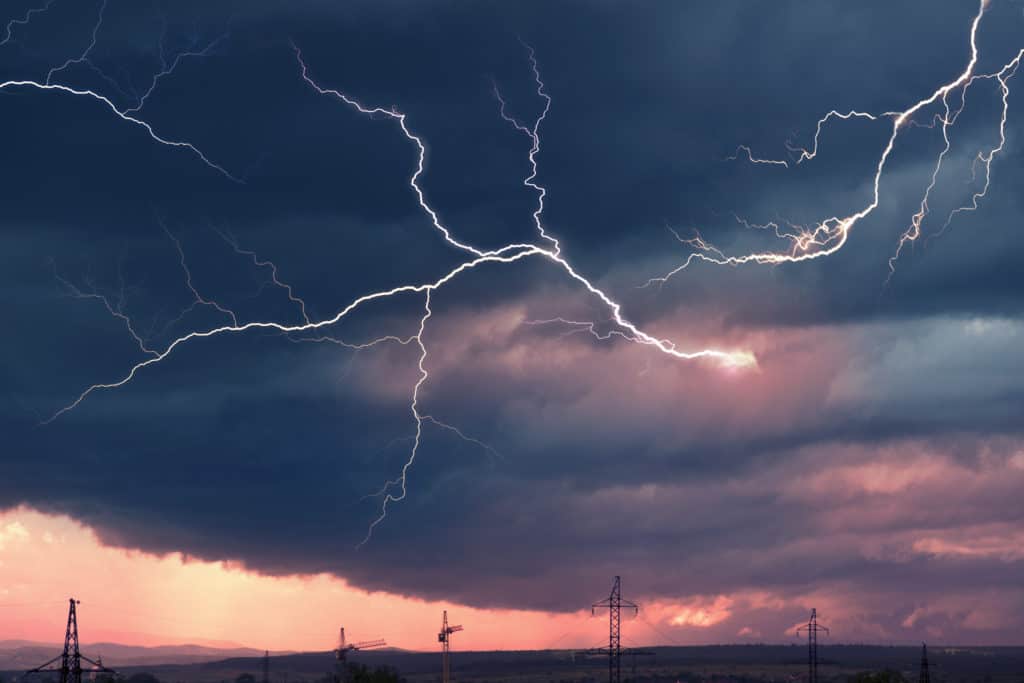
At first glance, Arizona and Texas are fairly similar. Things such as the weather, natural phenomena, and the ethnic populations are seemingly the same. However, this article will help to explore how these two states differ in terms of laws and customs.
1. Temperature
Both states are known for their warm weather. In Arizona, winter temperatures average from 41 degrees Fahrenheit to 67 degrees Fahrenheit. When spring comes, the temperature climbs to 57 degrees Fahrenheit and reaches a high of 86 degrees Fahrenheit. The summer reaches the hottest temperatures that begin at 78 degrees Fahrenheit and reach a scorching 106 degrees.
Texas is slightly more varied in temperature. During the winter months, temperatures average from a low of 30 degrees Fahrenheit to a pleasant 70 degrees Fahrenheit. When spring arrives, the lows rise to 40 degrees Fahrenheit and the highs reach around 80 degrees Fahrenheit. Summers range from a low of 67 degrees Fahrenheit and climb to an uncomfortable 100 degrees Fahrenheit.
2. Household Income
The average household median income nationwide as of 2019 was $68,703. Both Arizona and Texas fall below that national average. For Arizona, the reported household median income was $62,055. However, 13.5% of the population was living under that median for the year 2019.
In Texas, the household median income was reported to be $61,874. The poverty rate for Texas that year was slightly higher than Arizona’s coming out to be 13.6%. However, through the years the percentage of those living in poverty has been decreasing in Texas.
3. Average Housing Costs
The average housing cost in Arizona is $329,000-$350,000. Houses in cities such as Phoenix, Tempe, and Chandler consistently follow this average cost. In cities such as Gilbert and Scottsdale bring this average housing cost up to $450,000-$500,000.
In comparison, the average housing costs in Texas begin at $231,000 and can rise to about $298,000 for an accommodating residence. However, it is estimated that there will be a 9.3% increase as the economy stabilizes from the effects of covid-19.
4. Natural Phenomena

Both states have a history of dangerous natural phenomena occurring, though the types radically differ. In Arizona, the most common natural phenomena are flash floods, landslides and debris flows, earthquakes, and earth fissures. All of these phenomena cause disastrous results.
Texas is one of the many states in Tornado Alley. As the name states, tornadoes are common storms in Texas. In addition to tornadoes, other dangerous phenomena include wildfires, hurricanes, and hail storms.
5. Urbanization
Both states have seen a significant amount of urbanization throughout the years. In Arizona, 96% of the population lives in urbanized cities. The largest area in which urbanization has occurred, and continues to occur is in Phoenix.
Texas has a larger spread between rural and urban areas in the state. The south-eastern portion of Texas is more highly urbanized. Major cities such as Houston and Dallas continue to see the most growth. Housing is more limited in these cities because of the recent urbanization, which makes it difficult to find good housing.
6. Crime
Crime is one of the biggest concerns when moving to a new state. Neither state has a high percentage of crime, yet it is still significant enough to mention. As of 2019, the crime per 100,000 persons was reported as 455.3. In compiling further information, the number of murders committed in 2019 was 365.
In Texas, the crime per 100,000 persons is lower than Arizona’s being reported as 418.9. There was a stark increase in the number of murders that were committed. There were 1,409 murders reported as having been committed during 2019. This may seem like a high number compared to Arizona, but because Texas is twice the size, the statistics are comparatively the same.
7. Political Standing

The political standing of Arizona and Texas are quite similar. Both are, for the majority, republican. Looking at a political map for both states gives an interesting view of where political majorities fall. In Arizona, three-fourth of the state is Republican. The north-western and southern parts have the most right-leaning density. In the northeastern part of the state, the politics indicate a more left-leaning population.
The same holds for Texas. About three-fourths of the population are republican. Interestingly, the north-western and southern parts of the state are populated with those that are more right-wing. The southern and eastern parts are also left-wing. Knowing the political boundaries of both states is important to know when trying to decide what towns to live in.
8. Gun Safety
Another concern that families may have as they consider moving to a new place is what laws are in place concerning gun safety. In comparing the laws of both states, a marked difference appears. The gun laws in Arizona are far more relaxed than those in Texas.
In Arizona, those who are 18 years of age are permitted to openly carry their weapon. Adults 21 years and older can conceal carry without a permit. This can be a very nerve-wracking piece of information for families with young children.
The laws in Texas are more strict. One must be 18 years old to carry a firearm and they must obtain an LTC (License to Carry). These laws help to keep gun distribution more balanced.
9. LGBTQ+ Laws
With a rise in advocacy for the LGBTQ community, states have issued or changed state laws to create more political equality. Both states have legalized same-sex marriage, and common law between same-sex couples is recognized in Texas.
10. Educational Investment
In Arizona, there have been increasing cuts in school budgeting. These cuts affect not only the resources available but also the students’ abilities to learn. Career and technical courses have been cut out of middle and high schools, limiting educational opportunities to explore different fields. Additionally, funding for utilities is diminishing which creates a poor environment to learn in.
In Texas, there is a larger investment in education but there are still complications associated with it. On average, $5,140 of educational funding is spent per student. To compensate for schools that have fewer resources, higher taxes are placed upon higher-income neighborhoods. Although these funds are distributed to schools across the state, there has been little payout in terms of academic improvement.
11. Higher Education

Arizona is ranked 16th in the country when it comes to higher education. This means that more resources are devoted to these post-secondary schools. In addition to having more resources, 30 colleges offer 2-4 year programs. Six offer doctoral programs.
Texas is ranked 3rd in the country for its higher education. Annually, $1,376,000,000 are devoted to universities and colleges. There are currently 104 academic institutions that offer 2-4 year programs. In addition to these schools, 10 of them offer doctoral programs.
12. Culture
Perhaps one of the biggest culture changes in Arizona is that Daylight Savings isn’t practiced. Time stays the same. When it comes to distance, time is a huge factor. Locals will give the distance of a location, based on the time it takes to get there. For holidays, tamales are the norm. Christmas becomes a time where the tamale pots come out of storage.
In Texas, tamales are also the thing to have during celebrations. Sweet tea is the drink to have, no matter the time of day. You order Coke when you want a soft drink and then you specify if you want Sprite. Texan hospitality goes a long way so be sure to say, ‘hi’ to those you meet on the street.
13. Common Celebrations / Local Traditions
Perhaps one of the biggest celebrations in Arizona is named the Colors of Arizona. It is a celebration of Native American heritage. You have the opportunity to go onto a reservation, but sure to have an experienced guide with you. One of the strangest traditions is the Ostrich Festival. It celebrates the history of ostrich racing! It is now a three-day event filled with carnival rides and good fun for the family.
The Southwestern Exposition in Texas is the oldest and most famous rodeo event. Livestock shows and barrel racing are shown off during this fun event. If you’re looking to party then the Fiesta San Antonio is for you. It is a ten-day party filled with society balls, concerts, and food.
14. Diversity
In Arizona, well over half of the population is white. However, we see that 32 percent of the population is Hispanic or Latino. Arizona is a state that has more Spanish being spoken as the primary language. Texas has a less white presence than Arizona. The percent of the population that is Hispanic is almost 40 percent. Spanish is also being spoken more as the primary language, and many of the white population living in Texas speak Spanish as well.
15. Religion
Interestingly, both Arizona and Texas have Protestantism as the main religion. In Arizona, 40 percent of the population is recorded as being Protestant, whereas in Texas that becomes 50 percent. Catholicism is the next highest, which comes to 21 percent of the population of Arizona and 23 percent of the population in Texas.
16. Mental Health Resources
The mental health system in Arizona is not the strongest. The National Institute of Health (NIH) spends $238,000, which means Arizona is ranked as the 25th best in health care. Texas is ranked 7th, so mental health care is much better. $1,370,609 is spent on the NIH.
17. Medical Insurance
The medical payout for both states is the same. In Arizona and Texas, health insurance is on average $436 a month. Arizona is seeing a decrease in the monthly payout for medical insurance, whereas the payout is on the rise in Texas.
Related Topics:
If you like the article above, here are some other similar articles you should check out!
13 Best Family Neighborhoods in San Antonio, Texas
13 Best Family Neighborhoods in Fort Worth, Texas
17 Reasons Not to Move to Scottsdale, Arizona (Voted by the Locals)
